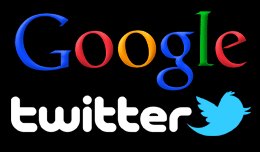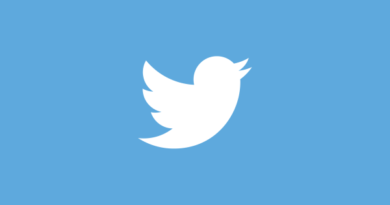Google, Twitter Flaunt Social Stats … It’s Like 2003 All Over Again
Whether on purpose or not, Google and Twitter are having a little back-and-forth this week about the size of their social networks — or, maybe more accurately, about the activity levels on their social networks. Google+ has X amount of users and the +1 button gets served Y times per day. Twitter delivers N tweets […]
 Whether on purpose or not, Google and Twitter are having a little back-and-forth this week about the size of their social networks — or, maybe more accurately, about the activity levels on their social networks.
Whether on purpose or not, Google and Twitter are having a little back-and-forth this week about the size of their social networks — or, maybe more accurately, about the activity levels on their social networks.
Google+ has X amount of users and the +1 button gets served Y times per day. Twitter delivers N tweets every day and saw P new signups just yesterday. It’s all quite reminiscent of the early/mid 2000s, when all of major search engines made a sport out of bragging over the number of pages they’d indexed.
But does it mean anything? Well, yes and no. Let’s dive in….
Google+ & +1 Button Usage Stats
For starters, Google CEO Larry Page spilled the beans Thursday during the company’s earnings call. He also shared the details on Google+ (in a post that’s been +1’d 7,785 times and shared more than thousand times, if you need to know):
- Google+ now has more than 10 million users
- Google+ sees more than “one billion items shared and received” per day
- The Google +1 button is “being served 2.3 billion times a day”
Page also reported that 550,000 Android devices are being activated per day, and the Chrome browser now has more than 160 million users.
Twitter Usage Stats
Twitter followed up today — the 5th anniversary of its public launch as Twttr — with some stats of its own, shared, naturally, via Twitter.
- Twitter is “delivering 350 billion tweets a day” (source tweet)
- Just yesterday, Twitter “saw more than 600,000 signups” (source tweet)
Twitter also mentioned that there were 224 tweets sent on its launch day in 2006, and that today that many tweets are sent “in less than a tenth of a second.” There’s also a separate blog post announcing that there are now one million registered Twitter apps.
But as I said above, whether it’s intentional or not, that first stat — 350 billion tweets per day — is something of a throwdown to Google after its announcement of one billion items per day on Google+. “Hey, Google, you have a loooooong way to go.”
Does It All Mean Anything?
The problem with some of the numbers coming out this week is a lack of context. In Google’s case, there are several unanswered questions:
- If I share a Search Engine Land link on Google+ that six other people share, is that seven shares in Google’s count, or just one because it’s all the same URL?
- When Larry Page says that the +1 button gets served 2.3 billion times per day, does that include the 10 times it gets served for every search results page on Google.com?
- “Served” is one thing, but how many times are people clicking on +1 buttons?
Likewise with Twitter’s numbers,
- Does 350 billion tweets include retweets, or just original messages?
- How many of the 600,000 signups are spam accounts, like this one, that are (hopefully) bound to be removed?
- How many of the new accounts are actually from different people? (I have a handful of accounts that I own and operate, and most people I know maintain multiple accounts.)
It reminds me of the “old days” of search engines bragging and fighting over which one had the biggest index.
In 2003, ResourceShelf wrote about Google and AllTheWeb one-upping the other over index size. In 2005, it was Google and Yahoo fighting over who had the bigger index and even how index size should be measured. Google dropped the web page count from its home page in 2005, but in 2007, the company announced that it was three times bigger than its rivals. Finally, in 2008, Google said that it knows of one trillion items on the web but, as Danny Sullivan pointed out in that article, “more documents doesn’t necessarily mean better relevancy.”
And there’s an analogy in the social space, too:
1. More Google+ users doesn’t necessarily mean a better social experience. In fact, I’d suggest that one reason so many in the tech industry have fallen in love with Google+ is that the “great unwashed masses” aren’t using the service yet. (According to Find People on G+, almost 60% of Google+ users are engineers, developers, designers and software engineers. And almost 74% are male.) I’ve seen people commenting on Google+ and elsewhere that they wish Google would not allow businesses to create a presence on Google+.
2. Twitter reaching 350 billion tweets also doesn’t necessarily mean a better experience for its users. For some, it only means more noise. And let’s not forget that it’s already hard enough to find old tweets.

Facebook: Almost A Breath Of Fresh Air
I actually found it refreshing last week when CEO Mark Zuckerberg casually mentioned that Facebook had reached 750 million users, and said that the company decided not to announce that when it happened because “you don’t measure the Internet’s value based on how many people use it.”
Still, Facebook does maintain and update a statistics page, and as Danny Sullivan pointed out in Has Facebook Become The Master Key To Unlocking The Web?, Facebook’s never previously been shy about announcing statistical accomplishments for its Like buttons, widgets, user numbers and other things.
Final Thoughts
The Google+, +1 button and the Twitter stats are important, at least to the degree that we can keep an eye on various milestones and analyze how the companies’ products are growing … or how they’re not growing, as is sometimes the case.
But actual usage is what matters most — consistent, longterm usage. MySpace isn’t struggling because of a lack of accounts; a lot of us still have accounts there, but we’ve stopped using them.
So let’s all keep this stuff in mind when search/tech companies announce their latest milestones. It’s not just sheer size that matters, but the usage and context around those numbers that count the most.



